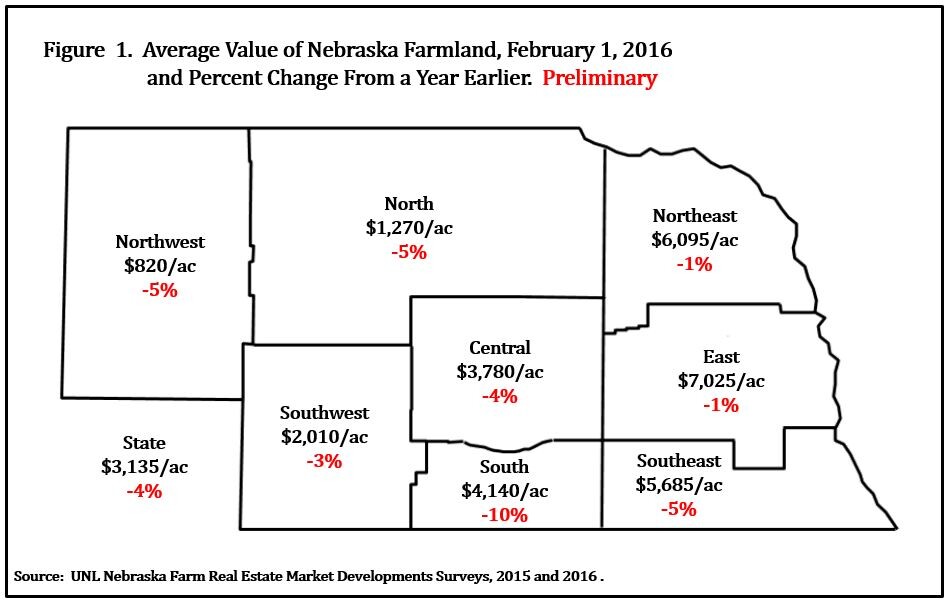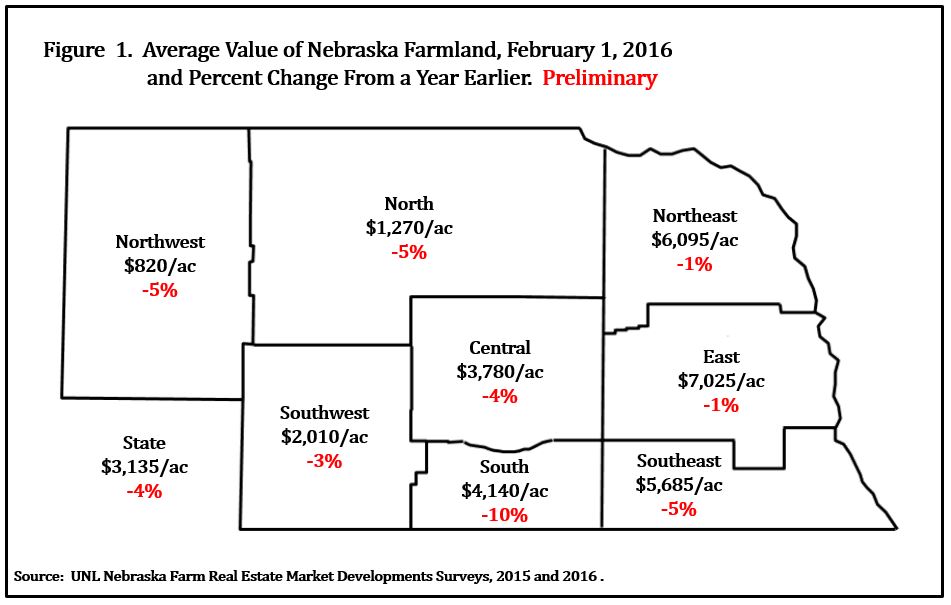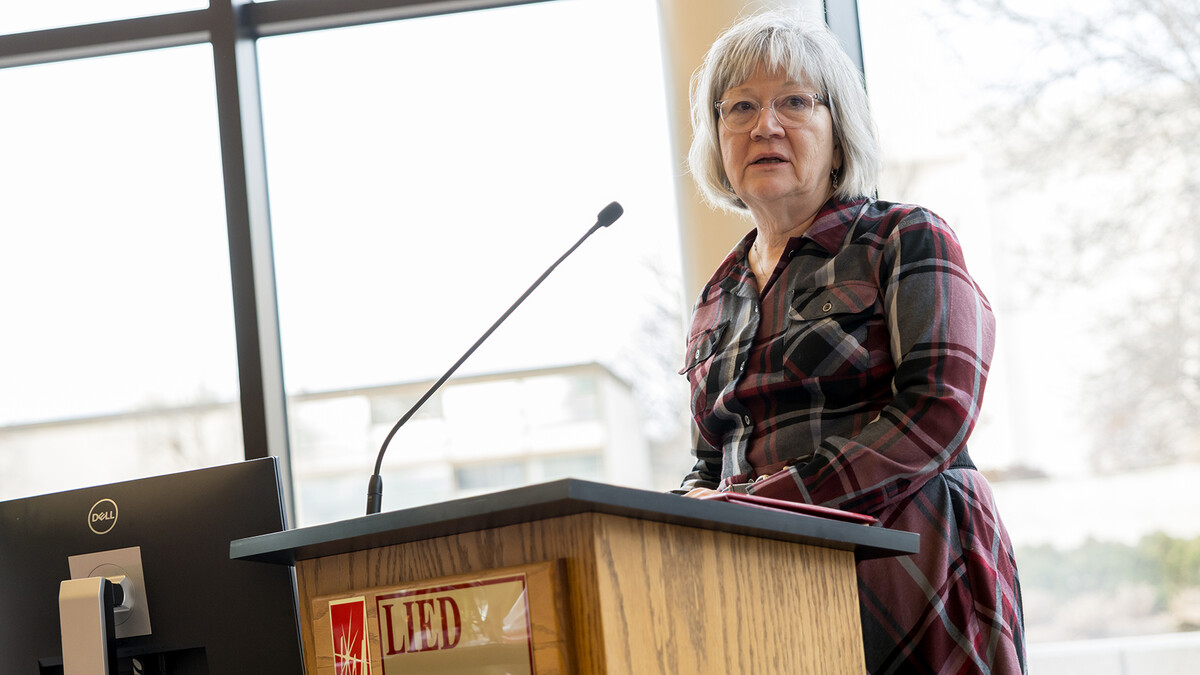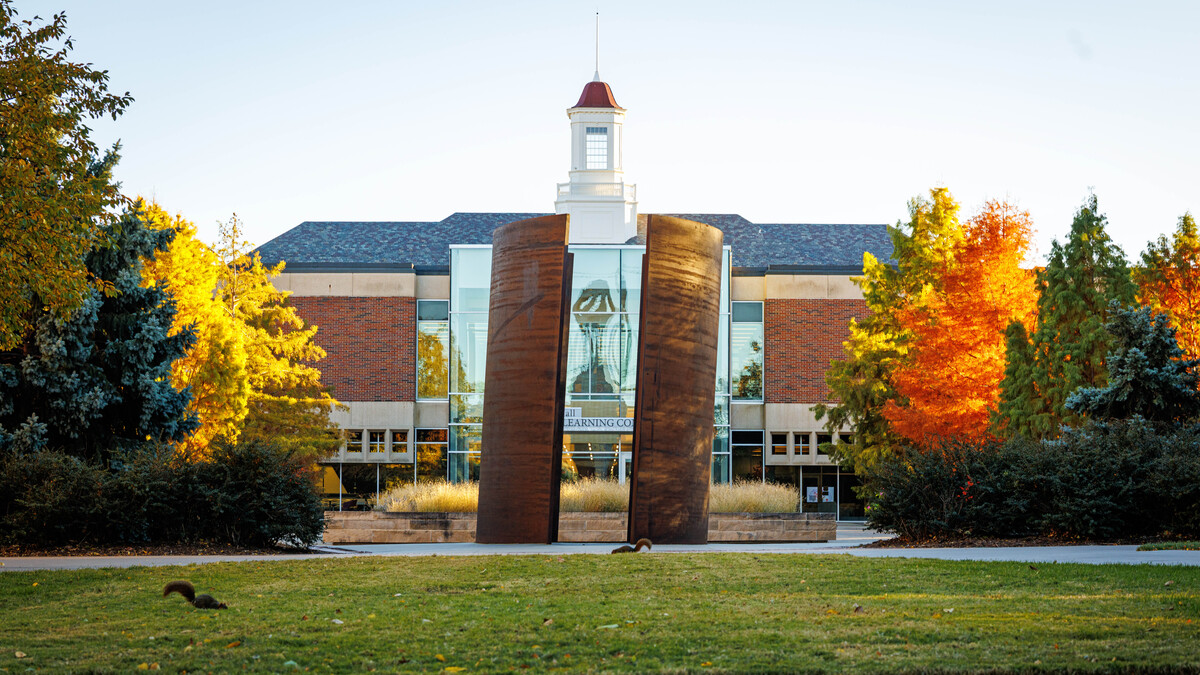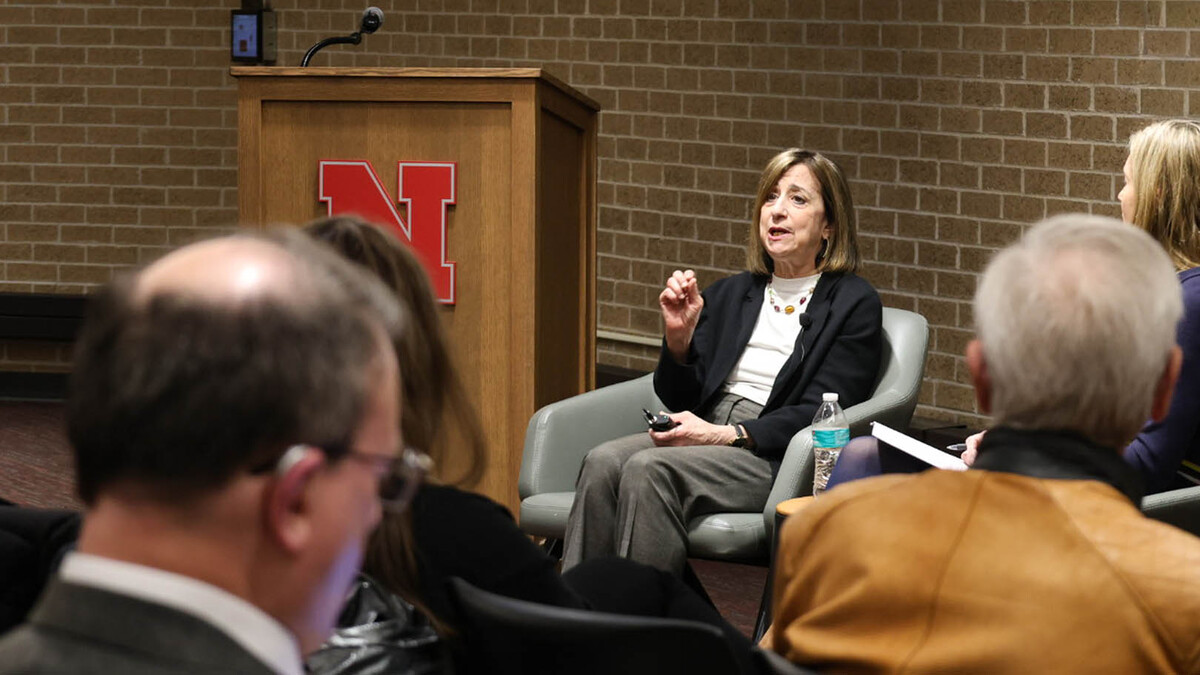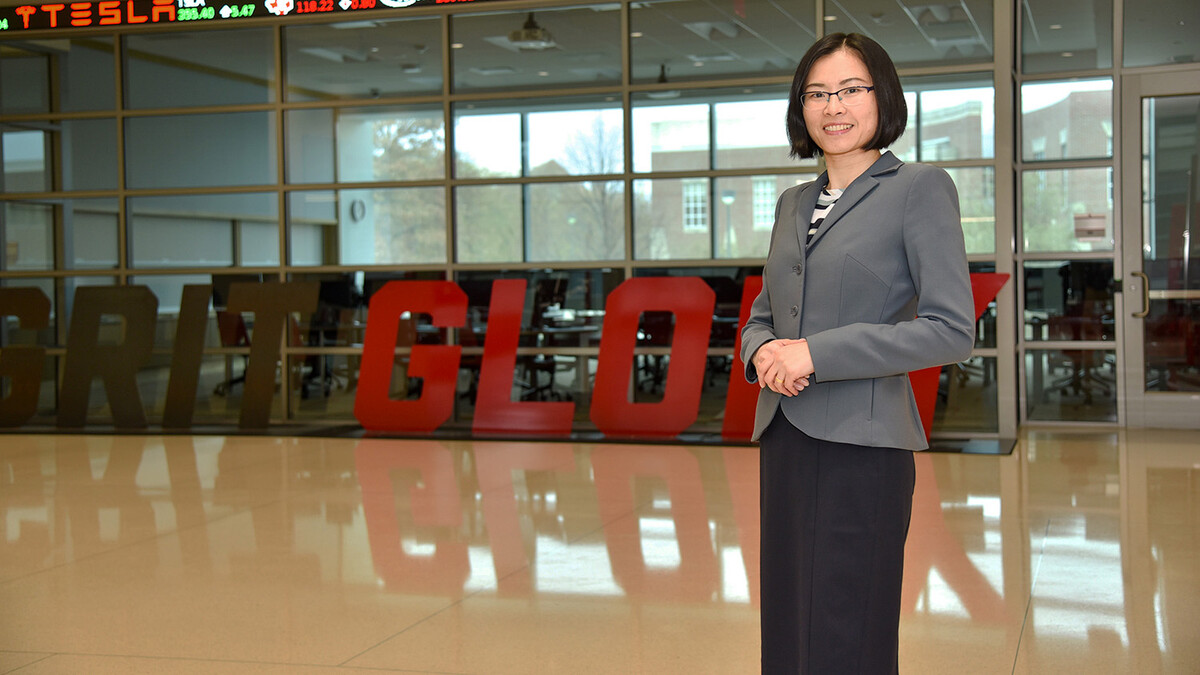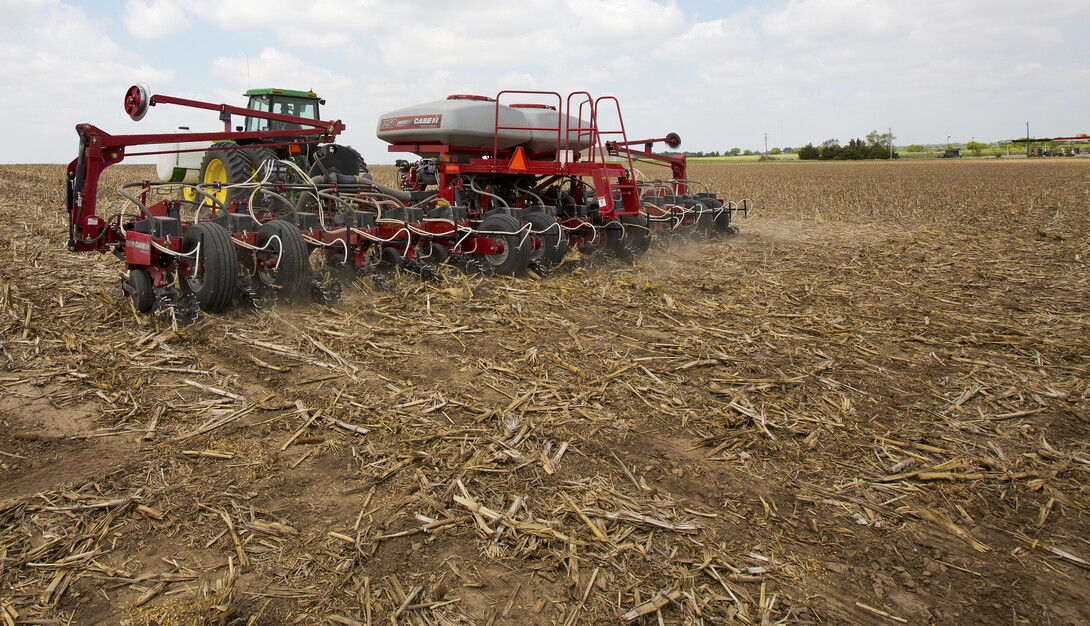
The average for Nebraska agricultural land values has declined by about 4 percent in the last year, according to preliminary findings from the University of Nebraska-Lincoln Farm Real Estate Market Survey. The decline marks the second consecutive year of lower weighted average farmland values in Nebraska.
The statewide all-land average value for the year ending Feb. 1 was $3,135 per acre, down $115 per acre from 2015. Average farmland values for the eight districts and the percentage decrease from 2015 were: northwest, $820 (-5 percent); north, $1,270 (-5 percent); northeast, $6,095 (-1 percent); central, $3,780 (-4 percent); east, $7,025 (-1 percent); southeast, $5,685 (-5 percent); south, $4,140 (-10 percent); and southwest, $2,010 (-3 percent).
The decline comes as producers across Nebraska face lower prices for crops and livestock. Lower values have resulted in tighter margins for servicing rent or debt payments.
The largest price decline by land class occurred in the hayland category, which declined 17 percent. The reverberating effects of the 2012 drought and resulting increase in demand for forages to feed cattle led producers to increase their willingness to bid up the price of hayland through 2015. Some of the highest rates of decline for hayland were noted in the major cow-calf producing regions of the state, including the northwest and north districts.
Gravity-irrigated and center pivot-irrigated cropland reported the next highest rates of decline, about 6 and 4 percent respectively across Nebraska. Dryland cropland with irrigation potential also followed similar trends across the state. Survey participants indicated that financially sound market participants still have the ability to secure long-term financing at favorable fixed interest rates, but meeting annual debt payments on newly purchased property with lower commodity prices remains a challenge.
Dryland cropland without irrigation potential or tillable grazing land noted small price increases in 2016 across Nebraska, but these may be noted as a relatively unchanged market for this land class.
Rental rates for dryland and irrigated cropland declined about 5 to 10 percent across Nebraska. Higher rates of decline were noted for western Nebraska compared to the eastern regions of the state. Grazing land and cow-calf pair rental rates followed suit as cattle prices and future cattle price expectations have retreated from record highs reached in 2014. Rates of decline were higher for regions that had record rent levels in 2015.
The average monthly rental rate for a five-month grazing season was about $55 per month or $275 for the grazing season. Survey respondents noted the differences in the rental rate ranges reported across the state may be attributed to the level of service that the landlord provides to the tenant as part of the lease.
Rental rates for agricultural ground in Nebraska peaked in 2014 and 2015 for cropland and grazing land, respectively. As the value of commodities declines, tenants face tightening financial margins. Landlords in Nebraska have faced higher landownership expenses as property taxes have continued to rise. Survey participants noted the dynamics involved in negotiations on rental rates typically have centered on these concerns.
The preliminary report can be found here.
Land values and rental rates in the report are averages of survey participants’ responses by district. Actual land values and rental rates may vary depending upon the quality of the parcel and local market. Preliminary land values and rental rates are subject to change as additional surveys are returned. Final results from the survey will be published in early June and will be available here.
Land appraisers, farm managers or agricultural finance professionals from Nebraska interested in participating in future Nebraska Farm Real Estate Market Surveys are invited to contact the UNL Department of Agricultural Economics at 402-472-3401 or agecon@unl.edu.
